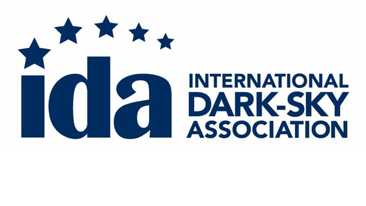Insights > A Vision for Change: Tulsa on the Move

A Vision for Change: Tulsa on the Move
Evolving Toward Inclusive Cities: A Series from Caddis Collaborative
Post #4: A Vision for Change: Tulsa on the Move
In 1921, the thriving African American community known as Greenwood – or Black Wall Street – in Tulsa, Oklahoma, was viciously attacked by white mobs. The community was essentially razed: homes and businesses were destroyed, and as many as 300 Black people were killed. The Tulsa Massacre has been called the single worst incident of racial violence in U.S. history. The community’s “crime”? The accumulation of Black wealth, especially housing wealth, in an area that was home solely to Black Americans.
Meeting Greg Robinson
Most White Americans do not know the story of the Tulsa Massacre. Caddis Collaborative first learned about this tragic event when talking to Greg Robinson, a 30-year-old African American community leader from Greenwood. Caddis was in Tulsa to work on Heartwood Commons, the city’s first cohousing community. We were partnering with local architect Molly Jones, president of Jones Design Studio. Molly suggested that we meet with Greg to talk about what aspects of cohousing’s participatory design process might help his community face its planning challenges.
In 2020, Greg ran for mayor of Tulsa. Although he didn’t win, he put both Tulsa’s racist history and a forward-looking vision for an inclusive city on the map. Greg also works with the team at Met Cares Foundation. The Foundation’s mission statement reads: “Rooted in and inspired by the ancestors of Greenwood, North Tulsa will be a vibrant community where children are thriving and residents have the power to make positive change!”
A key part of Met Cares Foundation’s vision is inclusionary zoning policies and other housing reforms. The Foundation understands that housing has historically been used to create and generate wealth and opportunities for White Americans – and used at the same time to oppress Black Americans and other people of color. Housing reform, says Greg, is essential for the “transformational growth and change for the next generation of Americans.”
The History That Brought Us Here
Tulsa’s story may be unique in its details, but it is anything but unique in broad strokes.
After the Civil War, Black Americans who had formerly been enslaved were promised 40-acre land grants by the federal government. Yet the government failed to provide these land grants – all while giving 1.6 million White families 160 acres under the Homestead Acts during and after the Civil War.
A couple of decades later, the Land Run of 1889 gave predominately White settlers huge access to land in Oklahoma. Black people had hoped the “land grab” would benefit them as well, but their dreams were largely not to be realized.
Massacres that occurred during the Jim Crow period, says William Darity, Jr., a Duke University professor, resulted not only in the loss of Black lives but also in the “destruction and appropriation of Black property by White terrorists.”
After World War II, explicitly exclusionary housing policies, as described in Richard Rothstein’s 2017 book, The Color of Law: A Forgotten History of How Our Government Segregated America, intentionally excluded Black people from real estate ownership.
While the 1921 Tulsa Massacre may be the starkest expression of suppressing Black wealth, all of these mechanisms – enacted during the Civil War through the post-World War II era – kept Black families from amassing wealth and generating new wealth.
Righting Past Wrongs
Tulsa leaders like Greg Robison are working hard to find ways to right past wrongs. In many ways, Greg can be seen as part of the “reparations” movement, which Ta-Nehisi Coates unofficially kicked off with “The Case for Reparations,” his groundbreaking article for The Atlantic. Those who are in a position of privilege and those who are beneficiaries of inequities should also work to find justice, an issue we’ll address in “American Cities Can Learn and Evolve.”)
According to The Washington Post’s article, “The ‘Whitewashing’ of Black Wall Street,” “Black families today have just over one-tenth the wealth of the typical White household.”
In Oklahoma, that legacy is felt even more keenly due to the racist destruction of Black Wall Street. But now, as Tulsans try to address and rectify the sins of the past, many of their efforts can be seen, The Washington Post says, as “whitewashing.”
In North Tulsa, development contracts are primarily going to large, White businesses, and Black entrepreneurs are finding themselves squeezed out once again. They are told they don’t have the necessary capital to mount large projects – but the history they have faced has made it almost impossible for them to accumulate such capital. It’s a vicious circle.
“There is no such thing as race-blind economic development,” says Darrick Hamilton, a professor of economics and urban policy at The New School in New York, quoted in The Washington Post article. “Capital itself positions people and businesses to better take advantage of economic development. And we have a history in which whatever capital Black people would have amassed was literally massacred in a terrorist uprising 100 years ago.”
To right these wrongs, we need to understand and decode barriers to Black entrepreneurship, property ownership, investment, and agency. Then we need to work collectively – through government structures – to fix these problems. We need to address how funds are disbursed and partnerships are created.
It’s true that investment from outside the community may enable certain things that aren’t otherwise possible, but such an approach risks extraction of the wealth of the people it intends to support. By structuring projects, approvals, RFPs, or grants based on a scale that is out or reach for the community itself, they are again barred from participation. This leaves only larger investors and developers who, as well meaning as they might be, are not of the community and probably serve different economic and cultural drivers.
Another, entirely different approach would be the model we saw in Boulder, Colorado, with the creation of the Holiday Neighborhood, where Caddis Collaborative has its office. In that case, the local housing authority worked with the community to complete the “horizontal” development (that is, the entitlement process, roads, utilities, and the public realm) and sold lots/blocks to smaller-scale community-minded developers
In addition, Tulsa and other cities should be actively looking for ways to support Black tenants and Black-owned businesses on the path to property ownership. What would happen if we allowed micro-scale economics to work, if we provided mechanisms for barter/trade and other alternative arrangements and relationships?
A Vision for an Inclusive Community
Just as we recognize the policing practices that have created a need for Black Lives Matter, so too we need to rise up against bad urban design, policies that hurt people, policies that create strife for and impacts on real people. Tulsa’s Greenwood neighborhood – once a beacon of hope in the Black community – is an example of past oppression, current bonds against which residents are straining, and the opportunity for change. With community organizers like Greg Robinson leading new efforts, Greenwood can become a beacon of hope once again.
“We want a space where people can build the communities they want to live in, where they have ownership of the communities they want to live in,” says Greg. “We feel that’s going to produce very localized economies, which are always going to help the people who are within that space.”
Greg’s philosophy is at its heart community-centered – for the community, by the community. That’s what inclusionary zoning and housing practices ultimately create. In that way, the elegant and intentional community engagement of the sort Caddis uses with cohousing communities can be brought to bear: ask the people what they need, and endeavor to provide it.
“We have the ability and the answers to describe and build the community we want to live in,” Greg says. “The institutions have to give the people they’re serving the space and the resources to build the communities they want to build. In the long term, we create a much more not just inclusive community but also a much more skilled community and an invested community. I see tons of ownership in that, tons of good feeling.”
More from Our Series on Evolving Toward Inclusive Cities
Want to learn more about how the United States might evolve toward more inclusive cities? Join Caddis Collaborative as we explore these issues. Learning about these issues is one step toward a cure. Check out our other posts in this series:
- Post #1: The Air We Breathe Isn’t “Natural”
- Post #2: Inclusionary Zoning and Housing Justice
- Post #3: Creating Inclusive, Complete Communities
- Post #4: A Vision for Change: Tulsa on the Move
- Post #5: American Cities Can Learn and Evolve
For a list of additional resources, check out the links included at the end of Post #5: American Cities Can Learn and Evolve
Photo by Joshua Lott via The Washington Post. Caption: “The Rev. Robert R.A. Turner, right, the pastor at Vernon A.M.E., leads a protest in support of reparations through downtown Tulsa.”
Recent Posts
- What Brings Us Joy: Julian Loves Being Creative January 21, 2025
- What Brings Us Joy: Chad Practices Meditation January 14, 2025
- What We’re Reading: Morgan Recommends “The Midnight Library” January 7, 2025
- Welcome 6 of 6: Settling In: Living in Community the First Year December 16, 2024
- Welcome 5 of 6: Orientation: Living in Community the First Few Months December 16, 2024
Other Relevant Insights






















We’re proud to be in good company.
We love being part of the community that’s bringing good design to good people. That’s why we contribute to and participate in these organizations – so we can bring the best emerging ideas to you.
Get In Touch
Let us bring your vision to life.
A beautiful space that fits your best life. A sustainable build. A fun and easy design process. We’re with you every step of the way – from the beginning dream to the finished project!



